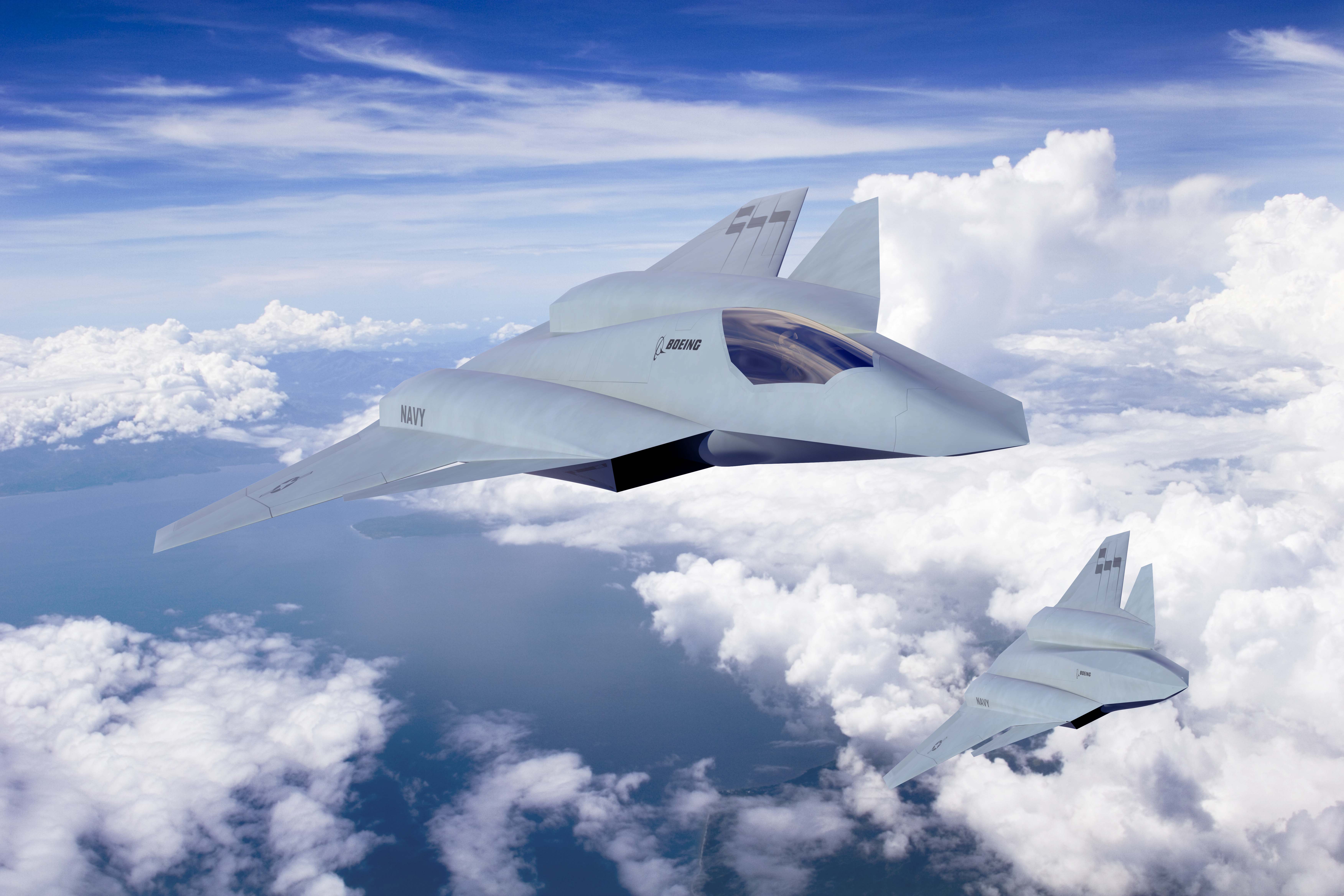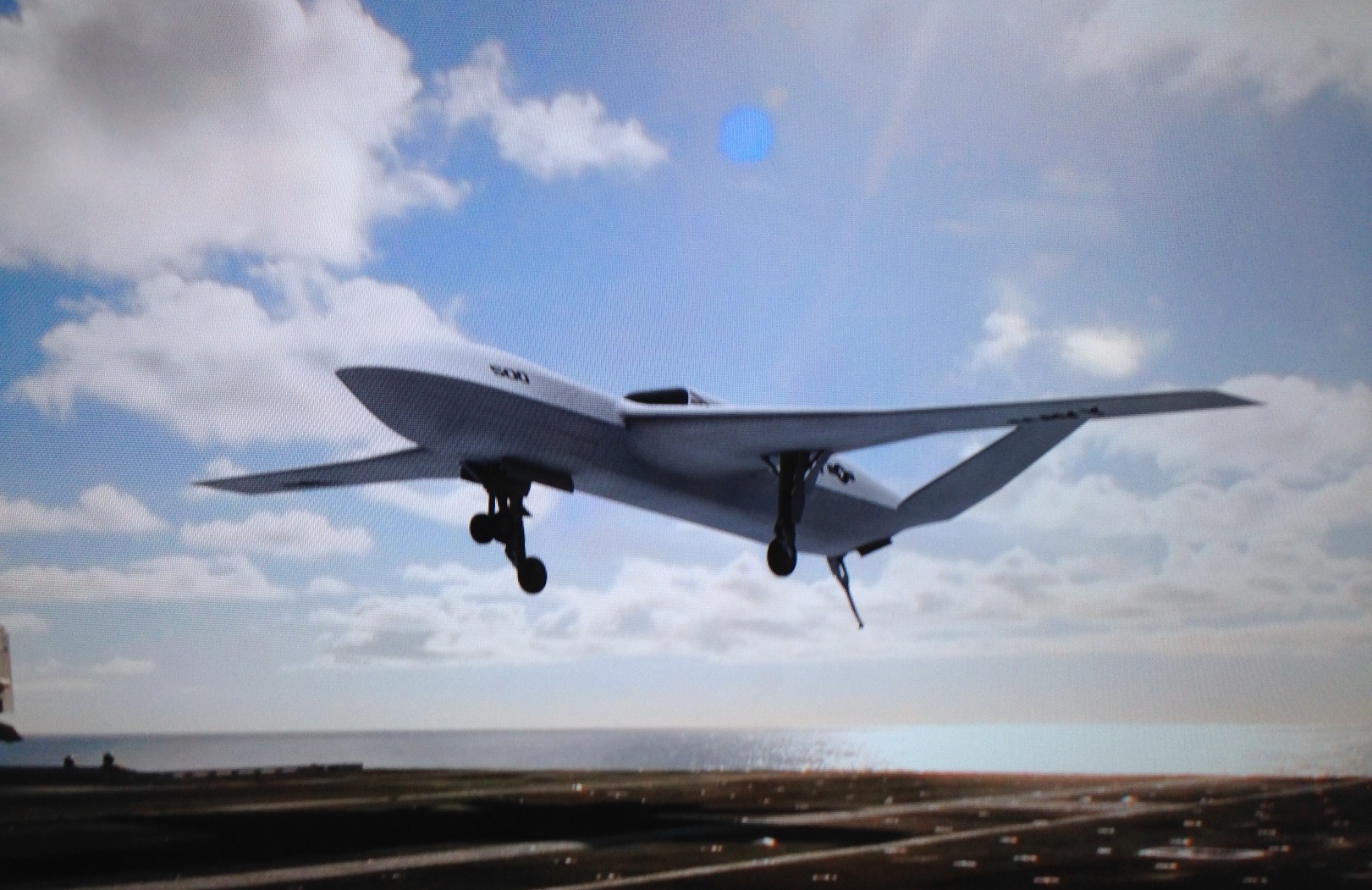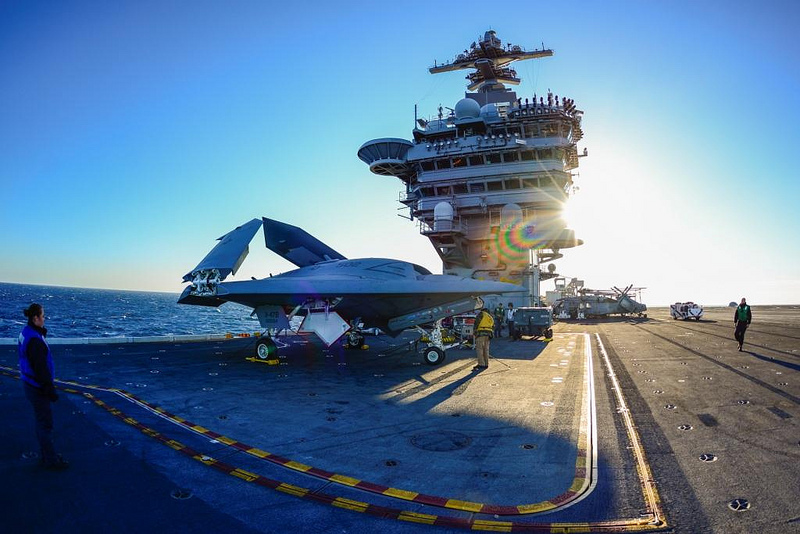
The striking power and stealth of the U.S. Navy’s Unmanned Carrier Launched Airborne Surveillance and Strike (UCLASS) concept was reduced to protect the role of the service’s next-generation of manned fighters, USNI News has learned.
In particular, the change in UCLASS from a deep strike stealthy penetrator into the current lightly armed intelligence, surveillance and reconnaissance (ISR) focused aircraft was — in large part — to preserve a manned version of the F/A-XX replacement for the Boeing F/A-18E/F Super Hornet, several Navy, Pentagon and industry sources confirmed to USNI News.
Industry, Pentagon and Navy sources outlined a, “bureaucratic and cultural resistance to the introduction of unmanned aircraft onto the carrier.”
Those sources outline a conflict inside the service between naval aviation traditionalists locked onto preserving manned strike aircraft against separate elements that want to shift more of the burden of strike to unmanned systems.
“Broadly speaking, the naval aviation community is kind of one mind on UCLASS and unmanned systems on carriers,” a former senior naval official familiar with the ongoing UCLASS requirements discussion told USNI News on Monday.
“If you didn’t want that unmanned air vehicle to compete with what’s likely to be a manned replacement for the F/A-18, what would you do? You’d make it ISR only or ISR/limited strike and make it for a low threat environment so that it really can’t complete against a manned fighter.”
Affordability

Specifically, preservation of F/A-XX — a key modernization program of the Navy aviation requirements in early studies — as a manned strike fighter was a instrumental in shifting the tenor of the program, several sources told USNI News.
However, the Navy says there is no direct connection.
“The Navy is conducting analyses to develop a follow-on system to replace the F/A-18E/F fleet,” Rob Koon, a spokesman for Program Executive Officer for Tactical Aircraft Programs [PEO(T)] at the Naval Air Systems Command, said in a Thursday statement provided to USNI News.
“This is a separate and distinct process from the UCLASS program and acquisition strategy.”
Though the relationships are technically separate, according to one source, the Navy has neither the financial nor the political clout to simultaneously develop three expensive and high-end aviation programs — UCLASS, F/A-XX and the Lockheed Martin F-35C Lighting II.
The challenges of developing a trio of high dollar warplanes at once and the latent cultural resistance to unmanned strike aircraft in naval aviation circles made an ISR centric UCLASS and easier win for the service, several sources confirmed.
Affordability of UCLASS has come up often in the development of the program and has been a key tenet of the program since its requirements shift in late 2012 and subsequent April 2013 approval by chief of naval operations Adm. Jonathan Greenert.
“As this is the first-ever carrier based unmanned system, we have exercised due diligence and great discipline in the formulation of the design requirements and business strategy to ensure we balance affordability with required capability to meet our warfighter’s requirements, on time, on cost,” wrote Rear Adm. Mat Winter, NAVAIR’s PEO Unmanned Aviation and Strike Weapons (U&W), in a Thursday statement to USNI News.
“With that, our approved acquisition strategy will ensure we deliver an affordable, relevant, and enduring unmanned carrier capability that will meet fleet requirements and revolutionize carrier air wing operations for decades to come.”
Supporters of the current UCLASS acquisition strategy include Adm. James Winnefeld, the vice-chairman of the Joint Chiefs of Staff who also chairs the Joint Requirements Oversight Council (JROC), Sean Stackley, assistant secretary of the Navy for research, development and acquisition (RDA) and the N98 (aviation requirements) and N2/N6 (information dominance) branches of the in the office of chief of naval operations (OPNAV), several sources told USNI News
For Unmanned Strike

While the program requirements are set, as far as the Navy’s concerned, there is push back on the ISR UCLASS from Congress, academics and other elements inside the Pentagon.
The Senate Appropriations Committee on Defense (SAC-D) asked for a clearer definition of requirements in its Fiscal Year 2015 budget act mark and Rep Randy Forbes (R-Va.), chairman of the House Armed Services Seapower and Projection Forces subcommittee, has been a supporter of a high-end UCLASS concept.
The National Defense Panel — the independent oversight body for the Pentagon’s Quadrennial Defense Review — issued its full throated support for a high-end and unmanned carrier aircraft on Thursday.
“We believe it is also critical to ensure that U.S. maritime power projection capabilities are buttressed by acquiring longer-range strike capability – again, manned or unmanned (but preferably stealthy) – that can operate from U.S. aircraft carriers or other appropriate mobile maritime platforms to ensure precise, controllable, and lethal strike with greater survivability against increasingly long-range and precise anti-ship cruise and ballistic missiles,” read the findings.
Other major proponents inside the Pentagon of a multirole UCLASS capable of operating against an anti-access/area denial threat environment include deputy defense secretary Bob Work, Navy Secretary Ray Mabus, Michael Vickers, under secretary of defense for intelligence, Christine Wormuth, under secretary of defense for policy and the director of cost assessment and program evaluation Jamie Morin, several sources told USNI News.
The Pentagon is taking a second look at the requirements.
The final Request for Proposal (RfP) for UCLASS to industry has been delayed pending a planned August review of the requirements by Work’s office, USNI News has learned.
Work has been among other leaders who favor a long-range strike optimized UCLASS that can perform raids inside highly contested airspace or against a powerful enemy surface action group composed of air warfare destroyers with advanced air defenses.
Some of these latest enemy warships are equipped not only with high-frequency targeting radars but are also equipped with low-frequency radars that can see tactical fighter-sized stealth aircraft.
Further, as signal processing improves, it is becoming possible to discern a weapons-quality track from low-frequency radar—which means broadband all-aspect stealth is a must, sources said.
Such a broadband stealth aircraft might be the only means of destroying such enemy warships other than by using submarines or long-range anti-ship cruise missiles.
Further, a UCLASS-type aircraft needs to be have the range to allow the aircraft carrier to stand-off from the enemy—which could threaten the giant warships with anti-ship cruise or ballistic missiles, the former official said.
The typical off-shore zone a where a carrier used to be able to operate with impunity a decade ago is not longer safe—which means tactical fighters may be of limited use in those scenarios.




